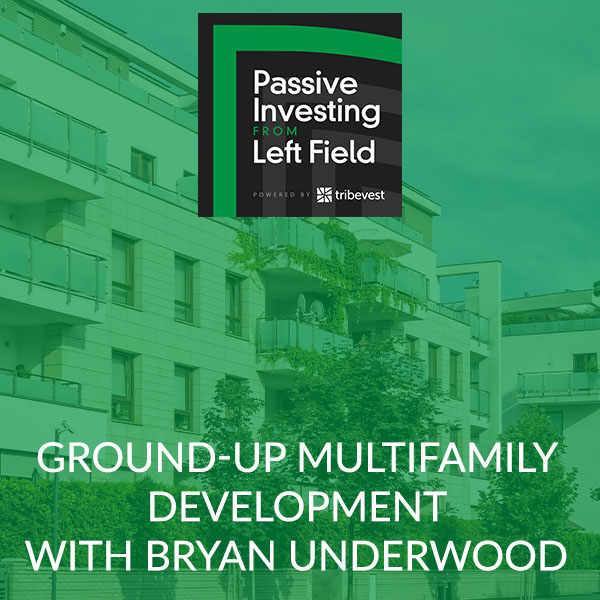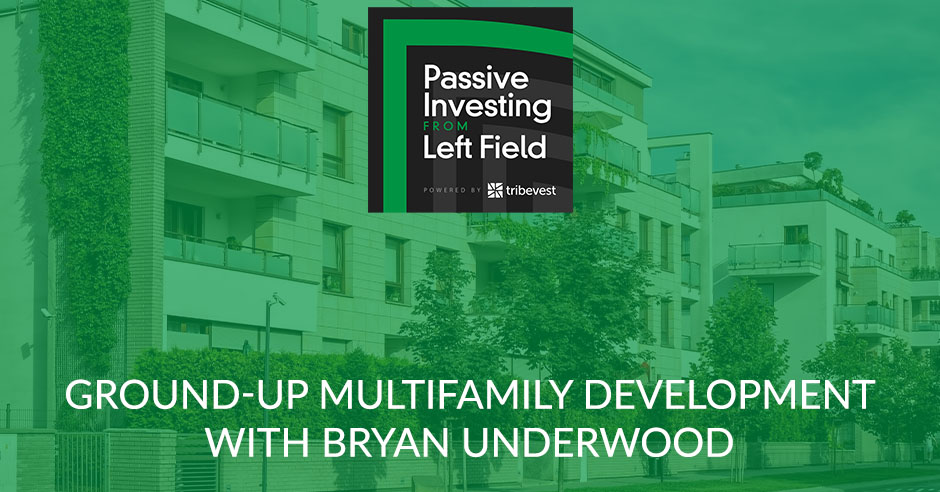
In real estate, there are many ways to generate cash flow and appreciation. Listen in as Jim Pfeifer talks with the Principal of Responsible Real Estate, Bryan Underwood as he shares the challenges of starting his own venture outside of his family’s business and expertise. Bryan discusses the importance of having the right partnerships, the initiative to learn from experienced mentors, and how accumulating knowledge can enable you to conquer an asset class entirely new to you. Check out this episode and be inspired by Bryan’s dedication to creating wealth while improving lives and building communities from the ground up.
Resources:
Learn more about Passive Investing from our books:
—
Listen to the podcast here
Ground-Up Multifamily Development with Bryan Underwood
We are excited to announce we are hosting our first Meetup in the Left Field 2022 on October 21st, 2022, in Columbus, Ohio. We have Zoomed together for several years, and it is beyond time to meet face to face. The primary purpose of this meeting will be to meet your fellow Left Fielders as well as to meet and interact with some of our community’s favorite sponsors and professionals.
The plan is to host a special infielder event Thursday night, October 20th, 2022, which will include appetizers, drinks, and the opportunity to connect with your Zoom friends. That will be followed by a full day of networking and meetings on Friday, October 21st, 2022. The cost to attend the event is $250. Members of the Infield Community will get a $100 discount and a free month of membership if they sign up before September 15th, 2022. We hope to see you soon in the Left Field.
—
Since you are here reading this blog, there’s a good chance you’re investing with a group of people. Whether you’re investing with family, friends, or like-minded people in the Left Field Investors Community, group investing is a strategy that can get you into more deals, help you diversify, and go beyond what you can achieve by yourself.
Before Tribevest came along, it was difficult to overcome all the hurdles associated with group investing. It was a strategy reserved for the wealthy. Not anymore. Now Tribevest helps your group with everything from incorporation, collaboration, banking, and equity management tools, all in a single place. You can focus on building wealth with the people you know, like, and trust. I’m using Tribevest for six of my investor tribes. It is a game changer. Check them out at TribeVest.com.
—
I’m excited to have Bryan Underwood with us. He is the Founding Principal of Responsible Real Estate, a San Diego-based real estate company. He spent several years in the family self-storage business prior to his current focus on middle-income housing. Bryan, welcome to the show.
Thank you for having me. I’m excited to be here.
The way we generally start out is by hearing about your financial journey, mostly. How did you grow up thinking about finance? How did you get into real estate? How did you get to where you are now as a syndicator of multifamily properties?
I grew up in a single-parent household. My mother raised me. What I did see growing up was that we had a family business. In my journey, I worked for our family business at one point. Early on, what I saw was she had small ownership of a little bit of self-storage. That small ownership helped her be a stay-at-home mother and helped us go through great education and play sports. When I’m in 3rd, 4th, to 5th grade, I don’t understand it.
As I got into high school, I started seeing this real estate investment has provided not only for my family, it has provided an opportunity for my mom to invest in her kids, be at home, take us to sports, and go through a great education. Fast forward in life, I had this itch for real estate. I was curious. I saw the family business. I saw the generational wealth it provided, but I had this curiosity about how it all worked.
If I had to put a date to it, this was 2004 going into 2005. I was searching for how somebody put a value on a piece of real estate. I was fascinated by that question because people are buying and selling all the time, “What is a building worth? What is a piece of land worth?” At that point in time, I had a mentor that I connected with.
He was doing his first development deal. I said, “Can I help? I have an interest in real estate. I got my salesperson license, and I’m trying to learn.” He said, “Come on board. Help me.” I sat in meetings with architects and civil engineers. I’m reading books on how all this stuff works and learning while doing it. That spun me into my first real estate deal, which was a piece of land we purchased in a city called Santee. That is in Southern California. It’s an East County submarket in San Diego.
I got my salesperson license. I started working with this mentor of mine. I’m reading all these books. I find this piece of land. It was on the MLS. It was owned by the YMCA. It’s an industrial piece. I said, “Here you go. They want $250,000 for the 16,000 square foot pieces of land. What can we do with it?” I had a mentor that was a little bit more seasoned than me. He was like, “Industrial is a nice little sweet spot right here. I bet we could build a spec industrial building.”
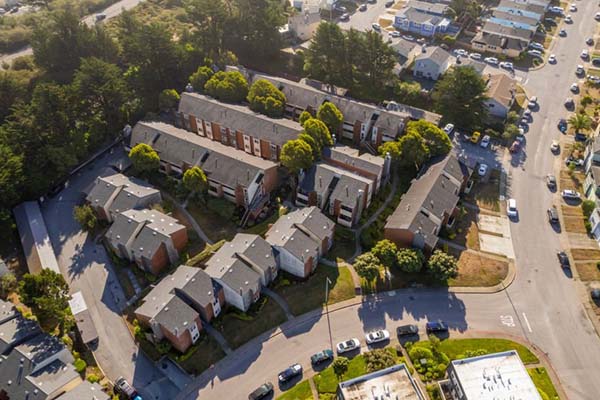
I was putting all of the things that I was reading about to work, meaning I took an 8.5 by 11 sheet of paper, and I wrote out, “Here’s my back of the napkin proforma on how I can potentially invest in this deal and how I can get money out of this deal.” I sat with a family member. I said, “I got an investment opportunity here. I like to be a third partner in this deal and invest $50,000. Can I borrow $50,000?” You could imagine. They’re looking at me like, “You have never done this before. You’re relatively young. You’re interested in this, but you want to borrow $50,000.”
I planned and put together a business plan, like we all should, and said, “Here is how we’re investing, and here is how we’re going to get it back.” Long story short, in my first deal, I borrowed $50,000, bought into this deal, worked with a civil and architect, and several months later, we sold it for $425,000. I gave the family member their money back. I gave them interest with all the closing costs. I have $70,000 in the bank. I said, “How do I do that again?” That’s a little bit of the history all the way through my first deal. I was hooked at that point.
I want to go back to the mentor question. What did you do next? You had your first successful deal, and it wasn’t anything you’re doing now. You are buying land and converting it into industrial. That is a different thing than residential real estate. What was your next step?
I’m still in this education process. I’ve been in this business for many years. If you are just getting into it, whether you are passive or active, there is something to learn every single day. It’s complex and vast. There are many different pieces that make the puzzle work. There are also a lot of different opportunities to make money and focus on different areas depending on your personality. Going back to what I did next, I said, “How do I get better at this? How do I learn?”
This is at the point where I said, “My family has a business. It is quite large. They focus on self-storage.” I didn’t know anything about self-storage. Quite frankly, I didn’t even care about self-storage at that point. What I cared about was learning real estate the same way I learned in that deal upfront. I wanted to get better at that.
I went and sat with my uncle, who runs the company, and I said, “Here is what I have been doing. I love this stuff. I want a job.” We have a great big family. It wasn’t easy to get a job there. I don’t know if he was testing me or what, but the first response was, “No.” I said, “Okay.” I’m also the guy that doesn’t take no very lightly. It could be a no, but I’m going to explore it more because the things I was trying to convey to him made too much sense for me to receive a no.
I started poking around the edges, and I was like, “Maybe I’m not explaining myself right. Let me reiterate what I was saying. Here is what I have been doing. I love this stuff. I want to get better. How can I help you in what you are doing? What are the things you are trying to explore that you don’t have time to explore?” At the time, he said, “We’re into trying to explore a business plan around storage condos. It was popular in ‘05, ’06, and ‘07. They have made a comeback in this last run-up that we had, but they went away during the Great Recession.”
I said, “Great, let me put together a business plan for you. I will explore that concept. You can put me on a temporary basis, and in six months, you could ask my boss, Tyler Exter, if I’m wasting his time. If I am, I will leave, no questions asked, but if I’m not, I would like a permanent job in acquisitions.” We struck a deal. I got it.
[bctt tweet=”If you’re just getting into real estate, whether you’re passive or active, there’s something to learn every single day.” via=”no”]
I spent the next year putting together and exploring storage condos. I also worked with a guy named Tyler Exter, who was my boss at the time. He is still a mentor of mine now. He taught me how to formally put together a cashflow analysis. I created a proforma for the first time. I learned how to underwrite property. I also met a guy named Dr. Reddy, who ran a Master’s in Real Estate Program at the University of San Diego.
In this pursuit of furthering my education and experience, I got into the family business. I’m working on a business plan. I’m learning from a mentor who is savvy in real estate. I found out about a program where you can go get a Master’s in Real Estate. I applied, and I got in. I spent the next three years on the job and doing the family business, but I also went back to school and got a Master’s in Real Estate from the University of San Diego.
You have mentioned mentors several times. It makes sense if you are working for somebody that they could turn into a mentor. Your uncle is in real estate, and he could be a mentor. How did you find that first mentor because you weren’t working for someone? In real estate, people are constantly talking about, “You got to go out and find yourself a mentor, but you have to offer them something.” You can’t say, “Be my mentor.” How did you navigate that with your first mentor, who I assume was less connected to your actual employed status at the time?
We are not connected. Nevertheless, he was in a relationship. You have to understand who the relationships are around you and understand what they do. By nature, I’m inquisitive and curious. I want to know how things work. My first mentor, Chris, didn’t have a background in real estate, but he was a very savvy businessman. He started a power electronics company and had warehouses in Taiwan. It’s all over the world. He sold that company to go into real estate for all the reasons why we like it. We were learning together.
The thing is, when I met with Chris, I recognized that he had some ideas, he was by himself, and he didn’t have the bandwidth to execute them. I offered my services. I said, “Can I come on board and help you? I will keep my day job, and I can work weekends. I can work Monday through Thursday and work for you Fridays.”
I was doing it in a way that I wasn’t expecting anything back. I was doing it in a way that if I can offer you something and I can learn from you, that is all I expect. I want to get in the trenches and have the opportunity to learn. That is important to recognize it’s not just, “Can you mentor me?” You want to find who are the people that you admire in your life. You could have mentors that you have never met. I don’t. You could follow people online, and they could be a mentor of yours.
I like relationships. I like to be able to meet people face to face. Look who is influential in your life and someone who is doing something that you are curious about. Have a meal with them and figure out what are the pieces that they are struggling with that perhaps you can help with. It’s in our nature of reciprocation. You are probably going to get something back. I would do it in a way that you don’t expect anything of a turn. You just want to learn.
You’re working in the family business in self-storage. What happens next? How long do you work in self-storage? I know the end is you’re not in self-storage anymore. I’m curious about that.

I spent 2007 to 2017 in the family business. This is where I credit all of my on-the-job learning and all of the support that I had through that period of time. In that ten-year period, I was able to take $60 million and buy land. I was able to source deals, off-market deals, on-market deals, underwrite deals, negotiate deals, put deals under contract and write contracts. I realized what property due diligence was. I had to manage all the relationships with our due diligence. I had to manage all the escrow timelines and commitments with those sellers.
I had to put together loan packages for loans. I had to interact with local municipalities to secure entitlements for 1.5 million square feet of storage over that 10-year period. I’m scratching the surface of all these different facets of real estate that a lot of people specialize in that I got to do. I got to wear all those hats over a ten-year period. I learned that a well-rounded approach like, “How do I source deals? What is a contract? What type of contract should I use for this deal? Is this so tricky that I should probably have an attorney drafter? Is this something I feel like I can do on my own?” I still do that on my own stuff.
Some of the contracts I do on my own, and some of them, I have attorneys draft it. It depends on what you’re dealing with. Over that ten years period, it was a blessing to be able to go spend that money buying land, securing entitlements, and honing all my skills in the real estate development world. If you have any questions around that and you want to dig deeper, I’m happy to do so.
What are storage condos? I never heard of that.
If you think about the difference between an apartment, a townhome, or a condominium, it is similar. In an apartment, you rent and have a landlord. In a condo, you buy, and there is financing available. The key there is financing available. Back in ‘05, ‘06, and ’07, storage condos were a thing. You could find them in town. Instead of having 10 by 30, which would be your large self-storage, you would use it for storage. These would be 14 feet, sometimes 20 feet wide by 40, or sometimes even 80 feet. It would be a personal toy storage, like if someone had a boat or had motorcycles where they wanted a man cave. They would buy this garage close to their house. There was financing available for these products back then.
You could buy a $200,000 storage condo by putting $20,000 down. At the time, your payment on your mortgage for your storage condos was less than what you could rent, anything like that, for in the market. It made sense to buy. When the Great Recession hit, that financing was the first thing to go away. A lot of financing for a lot of products went away. Something creative like that was gone early. You own it. You got the title to the condo. There are HOA, CC&Rs, or everything you would imagine in a residential, but it’s offsite toy storage. That’s the way I think about it.
You have been in self-storage for several years. Your step is to keep working for the family business forever via a self-storage magnate here, but you’re here to talk about multifamily housing. Clearly, you pivoted. What made you go out on your own? What made you change asset classes?
Maybe it’s the way that I’m built, but it’s important for all of us to continue to be challenged and also grow your skillsets. One of the things that happened in the family business for me, in particular, was I stopped growing. That was personally, professionally, spiritually, you name it. Mainly because the family business is focused, and this is a good thing. This isn’t a bad thing. Their focus is, “We want to buy the best two self-storage sites every single year. We want to go build them.”
[bctt tweet=”Always think in growth-centric terms.” via=”no”]
After you do real estate acquisitions for a family like ours, which builds in certain areas and is strategic about what they do, I could do my job of finding two deals every single year in my sleep. I don’t mean that I’m puffing my chest. It’s a 10,000-hour rule. You get good at something. I could find sites. It was 2015 when I started to feel like, “I don’t know if I’m going to be here forever unless I have some further opportunity for me to explore, grow, and create my own wealth generation and those things.”
I started poking around the edges and asked the family, like, “What else can I be doing?” The response was always, “If you keep your head down, you will be fine in twenty years.” That’s not my personality. It was at that point in 2015 that I realized they were probably going to make me CEO of this $2 billion business. Am I okay to say no to that? The answer was yes. I started thinking about what am I going to do differently. I’m going to roll out. I’m going to start a company. It’s not going to be a storage company because I don’t want to compete with the family, but what else can I be doing?
I’m a real estate geek. I love everything about it, and there are a lot of different ways to make money. I started tapping my relationships in San Diego. I said, “What are you guys doing?” I kept hearing about this homebuilding thing about the lack of supply in homebuilding. There is this great need. I’m thinking to myself, “If the need is great, how come we’re not building more?” That was the entry into, “I’m rolling out. I had to be okay saying no to taking over the company.” My daughter was born on May 17th, 2017. Two weeks later is when I left the family business to start Responsible Real Estate and focus on homebuilding.
There are a couple of questions there. Why did you name your company Responsible Real Estate? To me, that implies there is a mission or a mission statement behind that.
The mission statement is a Bible verse Galatians 5:13, “Called to live in freedom brothers and sisters. Don’t use your freedom to satisfy selfish desires. Use your freedom to serve one another.” As I was thinking about that verse, I was like, “How do I start a company that serves people?” I always like thinking about growth-centric terms. When you parse responsible, it’s the ability to respond.
It’s the ability to respond where you come to me, you need service, and I will respond to you. Right away, we’re engaging and growing with each other. That was the service to others coming from that Bible verse and my ability to respond. I thought that Responsible Real Estate had that buzz term to it. Parsing the response-ability with that Bible verse was the creation of Responsible Real Estate. That’s how it all came together.
Are you building ground-up developments? Are you buying existing properties and doing rehabs?
We’re doing both. One of the things that I realized, which probably all your readers have realized before me, is that I came from a family business that was quite unique. In that, it was family money that was used for every single deal. When you go out on your own and don’t have money in your bank account, how do you do real estate? How do you put deals together? I learned about real estate syndications as a way for me to raise capital. I didn’t know anything about real estate syndications for the first several years of me being in this business. I didn’t need to know it. It wasn’t a part of my daily job. I had to learn about that.

My first deal, which we’re about to go soup to nuts on, is a ground-up build-to-rent townhome development also in Santee. That was the same market where I did my first deal. I raised $1.5 million on that deal. We constructed ten build-to-rent townhomes. I have 8 of 10 leased. I’m about to lease my ninth, and we’re under contract to sell that asset as soon as I get this ninth one leased up, which I’m excited about.
That’s the first project you did. Since then, you have been building this build-to-rent. Are you building apartments? Does it vary? Do you have different projects?
There are two brands. The first brand is Responsible Residential, and I have a business partner in that. His name is Sean Jones. We did our first housing project together, the build-to-rent townhomes. We are looking for more of those. Organically, as we worked through that deal, we were working with a group named Urban Housing Partners in San Diego. You can look them up. They are synonymous with dense, urban infill multifamily development in San Diego.
They were working on a fee base in our townhome project. Organically, we realized that we were trying to do the same things. They are pivoting from an owner’s rep project management role into doing more of their own deals. One of the things Sean and I learned about with our ten-unit townhome development is we would be spending the same amount of time and effort if we were building 100 units as we are 10, so let’s build 100.
Sean and I became partners of Urban Housing Partners. There were five of us. We’re focused on dense urban infill. We have two projects in our pipeline. One is an 89-unit market-rate apartment in North Park, and the other is a 240-unit in National City. That’s under the bigger brand of Urban Housing Partners with Responsible Residential. Those are smaller syndications that were focused on build-to-rent townhomes. I have also done a couple of value adds. It’s not right in my wheelhouse, but I’m a real estate geek. When I see an opportunity, I can’t pass it up. We did a 506(b) syndication to buy twenty units in Bay Park. I got another one I’m close to buying in Boise, Idaho.
Most people, when they think of California, they think, “You live there, but certainly, you’re not going to invest there.” Can you talk a little bit about California and how you’re doing it there? What type of multifamily units are these? There are always these luxury A-class buildings going up. Is that what you’re doing? You mentioned middle-income housing. Is it a lower tier of tenants?
These are market rates that have an affordability aspect to it. Every city is going to be a little bit different. It’s difficult to build and buy in California, but it’s also a great place to own real estate. Politics aside, Southern California and California coastal city’s real estate has always done extremely well because the demand is there.
It’s not for the faint of heart. It’s challenging. There are a lot of difficulties. It takes a lot of time. It takes a lot of staying power. Combined, our group has over 100 years of experience developing in San Diego. We understand the process. We have the relationships to get it done. If you have that, you can create some tremendous value. This is a group that historically didn’t bring on partners, where now, for the first time, we’re allowing other people to invest alongside us in our deals.
[bctt tweet=”Have contingency plans, hire competent people, and be as conservative as you can.” via=”no”]
Here are the projects that we’re building when you talk about the middle market. I’m going to get a little technical here. Sorry if I lose you. In the city of San Diego, there’s a micro-unit, 100% density bonus. If the land only lets me build and the zoning only lets me build 35 units, I could build 70 units if I develop them under the micro-unit strategy. They are not small, like 300 square feet. They’re smaller in size.
By nature, those micro units are more affordable than any other unit in the market. What you’re paying for rent is going to be less than other units. It fits within the affordability aspect in the City of San Diego. It’s under that code section. They are nice buildings. They are podium projects. They are expensive to build, but we’re doing it in a way that we’re trying to deliver it to the market where people can pay rent because things are expensive in San Diego.
What is the exit on these? If you’re building and leasing them up, are you selling them as soon as they are fully leased? Are you holding for cashflow?
Another big lesson I learned by myself when I put together the townhome deal, and I knew this because I saw the family, is you want to hang on to as much real estate as you can. It’s difficult for somebody like me, or if you’re in my position, because a lot of times, how you end up getting paid is on the sale or when the waterfall hits. What we’re trying to do is strategically set up all of our deals moving forward, which I did not do in Santee.
For all of our deals moving forward, we want to do it in a way that we’re incentivized, and the investors are taken care of by holding this thing long-term. We’re trying to come up with creative ways where we could get paid. There are fees involved. There are things that we can do to get paid, where we can feed our families, but, at the same time, we want to hang onto these things for the next 50 years. We’re motivated to not be merchant builders. A lot of people are. We would like to build, recapitalize the deal and hang onto these things forever.
By recapitalize, do you mean refinance everybody out, they get their capital back, and the cashflow?
Not necessarily refinance everybody out. Our number one risk in development is taking out financing of our construction loan. To me, that’s our number one risk. People say, “What about price increases?” Yes, that’s a risk. “What about the construction process?” Yes, that’s a risk. Those are low in my mind because if you have a competent team, this is what they do all day long. We can get that part done.
What we can’t predict is, a few years from now, what the capital markets will look like and what takeout financing will look like. We do a lot of stress tests on our models for that. We try to figure out what is the doom and gloom scenario. What I have realized in my experience, and this goes back to self-storage investors in the Great Recession, all the way now, is we’re putting a minimum of 35% equity in every single deal. We got 35% equity and 65% debt. Ideally, that’s even 37% to 38% and 62% to 63%.

If you look out in a few years when you start stress testing and how we get refinancing on this loan and take this loan out, that’s the sweet spot where you could sleep good at night. If you don’t put that much money in, you start going, “Things have to go right.” I have been in this game long enough. Things never go right. Things never go exactly as you plan them. You have to plan for contingencies. That’s one way that we do it, where we know that even if it’s doom and gloom a few years from now, we’re going to be able to get this loan out and hang onto this property. It may not be the home run we thought we were, but every piece of real estate, if you hang onto it for twenty years, is a home run.
Can you explain what takeout financing is and when it happens? I assume it’s the transition from the construction loan to a more stable loan. Can you talk about the process and when it happens? What are you seeing in debt now? I know it’s super uncertain because no one knows where it’s going.
When we put our deals together on the ground-up construction, you’re going to close on your construction loan the day that you get your building permit. Those construction loans are a little bit different, but you’re going to have a 3-year with a 1-year extension. Sometimes you can get interest only. Sometimes it’s tied to LIBOR plus. You can look up 30-day LIBOR, and they will put a spread on it.
What we’re trying to do is on these larger projects, it’s a two-year construction period. For the first two years, we got interest reserve built into our capital stack. We’re taking loan draws and paying interest all the way. The start of year three is when we start to lease up. Now we can start bringing in some income. Every model is a little bit different, but let’s say it takes us 7 or 8 months to lease that up. We’re 2 years and 8 months, and we’re fully leased.
I now have operational data that I can now go to the debt markets and say, “We got a brand new product. We’re leased up. Here are our operating income and expenses.” You show them what you’re making. They say, “Okay.” We hire smart people like the folks at Northmarq Capital. These are structured finance people that know equity and debt. They help us go shop for the debt that we’re looking for.
Debt comes in all different sizes and colors. Do you want recourse or non-recourse? Do you want interest-only? Do you want interest-only for a period of time and then amortize? It gets complicated. We use people that are smart to help us with that. I would encourage other people to do that because it’s difficult to be your own mortgage broker. Oftentimes, going to your bank isn’t the right way to go about it.
I’m talking about $35 million projects. It’s not like I’m building a single-family home. Ideally, what we’re trying to do is take out the construction loan with a new permanent loan as soon as we can. Certainly, we want to do it before year 3 or 4, when the term is up on our construction loan. It’s somewhere in year three that you’re going to the debt markets, and you’re going to get a permanent loan. It might make sense to put amortizing debt on that. There are agency debt, local banks, and private debt funds. They all require different stuff. It gets complicated, so use smart people to help you. That’s what we do.
I finally learned that. I don’t do my own taxes. I don’t write my own contracts anymore. I hire smart people to do that stuff for me. I like it when you say that. With the economic conditions, the uncertainty around inflation, and costs and supply chains, how was that affected the properties that you are constructing and are already in progress?
[bctt tweet=”A new build may not give you instant cash flow but the wealth creation is tremendous.” via=”no”]
It’s affecting new builds. There are a couple of different things happening. I try to track the best I can what the big boys and big players are doing. I read a lot of different economic papers. Inflation is not helping with material costs, but, at the same time, it’s helping with rent costs. I try to keep things as simple as possible. It’s difficult to build a new product and get it out of the ground. What I try to do is keep it simple. If I had to make decisions based off of what’s happening now, and quite frankly, if everybody had to make decisions based off of what’s happening, nobody would ever build a house. No one would ever build an apartment complex.
One thing that I like about the ground-up development is it takes such a long time. Yes, we care about what’s happening in micro markets all around the world, but at the same time, if I were concerned about it, I wouldn’t build anything. We have to create our contingencies around what is happening. The way we contingently plan is to put enough money in the deal. We try to surround ourselves with the best people. We try to only hire the most competent people.
As an example, in this 89-unit, we have one of the best contractors, who is also an investor in the deal, who is going to build this project. Why would a contractor invest in a deal if they thought this was a terrible time to build and they couldn’t control costs? They don’t know what it’s going to be a couple of months from now, but this is what they do for a living. Internally, they have their contingency plans. We have our contingency plans, higher competent people, and being as conservative as we can. These are some of the things that we’re trying to do every single day.
Things are affecting home building that’s from single-family home subdivisions all the way to apartments. There are many people that are bullish on, “Shoot as soon as you stop.” That means I get to build more. I like the long-term horizon because it keeps us disciplined. It does keep us always refining our proforma. We’re always stress testing, but we’re trying to make one decision at a time, one step at a time, with the best people we could hire.
For passive investors, typically, we’re expecting cashflow. We do development deals sometimes, but it’s not the bulk of what most of us do. Can you compare and contrast a little bit the cashflow, buying an existing apartment, doing the little value add in cashflowing it versus ground-up development where you’re building it? You might not see anything for two years, and the cashflow comes later. Can you compare those a little bit for the readers?
You are going to have different returns. Sometimes they could be the same in Southern California. It depends on the market. You can go to another market now, and someone can probably offer you like, “On day one, we could buy a 6% return-on-cost, and I could give you an 8% or 9% cash-on-cash.” That might exist, but not in San Diego. If you want to buy an existing apartment complex in San Diego, the cap rates have adjusted a little bit, but you’re not going to buy anything at a 5% cap. It doesn’t exist. It’s difficult to find. If you find one, that’s trading at a 5% cap. There are got to be some value add components to that apartment for me to be able to bring that up to a 6% return-on-cost. I got to be able to go in and make something happen.
On the development side, that’s what we’re shooting for. We’re shooting for building a 6% return-on-cost. That may not sound like a lot of money, but here’s the difference. If I do a value add apartment complex, I might be able to give you decent cash flow now, but the value I’m creating on that asset is relative. I’m not going to say it is small. It is relative. If we build an apartment complex, a brand new one, I’m going to get you a better return-on-cost and a decent return on your cashflow once we start leasing this up, but right away, on paper, the day we start leasing up, I have doubled your money.
We might not sell. We might hang onto that forever. That is equity that will never go away. It fluctuates like this, but if we ever sold that asset, your two times day one might be 3 or 4 a couple of years from now. If we ever sell that asset, it’s a tremendous wealth creator. It might not give you instant cashflow, but the wealth creation is tremendous. That’s the best way for me to describe the two.
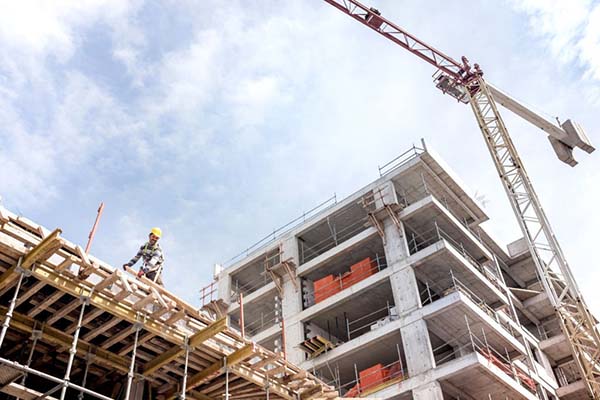
The thought behind the two is that once you have built it, it’s done, and it’s ready to be in service. It’s worth twice as much as you paid for it, the cost to build.
It’s not necessarily the cost to build is the equity that we need to build it. If I’m raising $12 million, day one, if we sold it to an investor, we’re going to get out at least 2X the day we start leasing it up. You lease it all the way up. The longer you hold it, the increased cashflow. You pay down debt. It’s a tremendous wealth creation.
I have seen it in storage. I put tons of storage deals together over my several-year period. You put permanent financing on that in a way that you plan on holding this for the long term. You got an asset that you built for $12 million. The day you got it completed is worth $15 million. It has leased up, and it’s worth $18 million. You got $10 million of debt. You fast forward several years from now. You got $6 million of debt. Your cashflow increased. Now it’s not worth $18 million. It’s worth $28 million. You got $8 million of debt. You got $20 million of value right there. You raise $3 million to $4 million to get the deal done. It’s staggering and crazy, but that’s why we love it. That’s why we’re in this game.
It’s a great strategy. It takes a little longer to play out than what a lot of us are used to. There is some impatience there for immediate cashflow. My thought is, “If you start on this early enough and you get in a few of them, you will always have one that’s coming online and ready to go.” The startup takes a little bit.
If you’re going to be investing, you need to be an active-passive investor. If you’re an LP, you got to be active. You’re not going to put money in one and wait five years. Maybe, but you want to be investing in deals because they are going to stagger. One might give you cash on day one. If you can do 2 deals a year or 1 deal a year for the next 5 years like, “I’m putting one in a development deal and one in another one. I got cashflow coming in,” a few years from now, this one pops. It’s compounding.
Here’s the last question I usually as. What is a great podcast you listen to?
It’s Passive Investing From Left Field.
That is the exact correct answer. Fantastic. If you got another one, I would hear it, but that’s enough for me. If the readers want to get in touch with you, what’s the best way to do that?
Go to InvestWithBryan.com.
It was great getting to know you and hearing about ground-up development. We don’t talk about it much. This was an impactful episode for me personally. I appreciate you being on the show.
Thanks for having me. I had a lot of fun.
Thank you.
—
It was an interesting conversation with Bryan. We started out talking about mentors, and that has been a big role in his business life. I thought it was interesting. His first mentor wasn’t even a real estate guy. It was a business person, but it got him thinking into real estate and was his way in, even though that’s not exactly what the guy had his expertise in. He noticed that each step of the way, he found a new person to mentor him and train him.
He always talked about giving something back to that mentor. The hard part is you can’t walk around and say, “Who wants to mentor me?” You have to have something you’re giving, and you will get back much more. He always found something he could help them with or offered to them, and they were willing to help him. That is pretty powerful.
He was always willing to learn, be challenged, and keep growing. That is critical. He had the opportunity to be CEO of his family company and work there for the rest of his career, but he wanted to challenge and keep growing. He thought the best way to do that was to go out on his own. It worked because he has been successful.
Ground-up development, a lot of us in the Left Field avoid it. I know I do because I’m a cashflow investor, and I want cashflow now. Ground-up development is a little bit of speculation because you’re not sure it’s going to work. There is the promise of future benefits in cashflow. It’s not strict speculation in my mind, but it’s something to think about. It’s a longer-term deal until you get paid out, but if you come up with a strategy of layering the deals, meaning maybe you do one every year.
In year one, no cashflow. In year two, no cashflow. Maybe year 3, the year 1 deal is cashflowing, and year 4, the 2nd year. Once you get them going, they keep cashflowing, and you can build a strategy around that. It takes a little bit more patience. I’m not sure I have that patience, but I’m working on it. It’s a work in progress.
When I was preparing for this, I was focused on how interesting it was that he changed asset classes. He went from self-storage to multifamily, but that isn’t his story. What he didn’t change was his strategy of development. The asset class is not as important as his strategy. He has always been a development guide, finding land and building something on it. Now, he is building multifamily instead of self-storage.
For me, it’s an asset class change, but the difficult part of this is the development part, not the managing of the asset class. Although he did make a pivot, it was interesting to me that he pivoted into the same strategy with a different asset class, and that’s why he was having some success because he hasn’t changed his strategy. That’s something that I found interesting. That was an interesting episode. I was thankful that Bryan agreed to come on the show. We will keep our eyes on him like we do all of our other guests and see what he gets into next. That is all we have for now. We’ll see you next episode.
Important Links
- Meetup in the Left Field 2022
- TribeVest.com
- Responsible Real Estate
- Urban Housing Partners
- Northmarq Capital
- InvestWithBryan.com
About Bryan Underwood
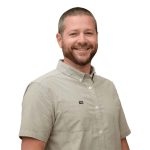 Bryan Underwood is the founding Principal of Responsible Residential (“RR”) and President of Responsible Real Estate, Inc. (“RRE”), a San Diego based real estate investment company. Mr. Underwood started RR & RRE after spending more than ten years in his family business, A-1 Self Storage/Caster Properties, Inc. Responsible Residential is a San Diego based residential development company focused on middle income housing.
Bryan Underwood is the founding Principal of Responsible Residential (“RR”) and President of Responsible Real Estate, Inc. (“RRE”), a San Diego based real estate investment company. Mr. Underwood started RR & RRE after spending more than ten years in his family business, A-1 Self Storage/Caster Properties, Inc. Responsible Residential is a San Diego based residential development company focused on middle income housing.
Prior to launching RR & RRE, Mr. Underwood worked as the Acquisitions Manager for Caster Properties, Inc./ A1 Self Storage. Since joining Caster Properties in 2007, Mr. Underwood has played a key role in the acquisition and entitlement of over 1.5MM square feet of Self Storage space with a market value of $200MM. His primary responsibility was to achieve the Caster family’s investment goals. To do this, he led the acquisition team in their efforts to uncover new Self Storage opportunities and negotiate transactions. He worked closely with the construction and development department for initial project cost estimating, site planning, and entitlements. He was the lead underwriter for each project and facilitated escrows and the completion of all due diligence items.
Mr. Underwood is an active member of the Commercial Real Estate Development Association (NAIOP). He participates in the University of San Diego’s Real Estate Mentorship Program. Mr. Underwood also sits on the board of the Serving Hands International Young Philanthropists, Fellowship of Christian Athletes – San Diego, the Crest Dehesa Harbison Canyon Granite Hills Community Planning Group, the East County Economic Development Council and is involved with numerous other charities including the YMCA & World of Work.
Mr. Underwood is a California Licensed Real Estate Broker and holds a Master’s Degree in Real Estate from the University of San Diego, and a Bachelor’s Degree in Management with a concentration in Entrepreneurship from National University.
Our sponsor, Tribevest provides the easiest way to form, fund, and manage your Investor Tribe with people you know, like, and trust. Tribevest is the Investor Tribe management platform of choice for Jim Pfeifer and the Left Field Investors’ Community.
Tribevest is a strategic partner and sponsor of Passive Investing from Left Field.

